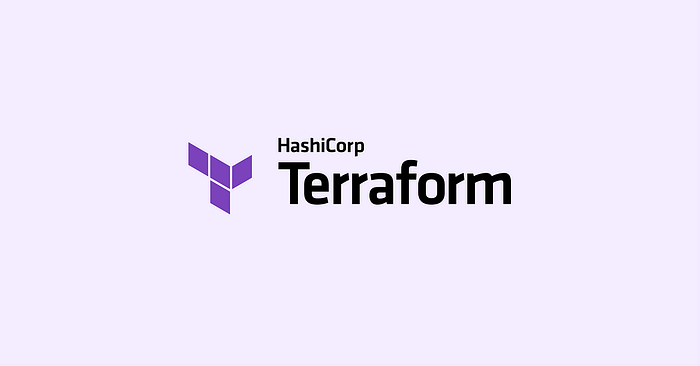
Introduction:
Terraform has revolutionized infrastructure provisioning and management in the DevOps world. With its powerful features and support for various cloud providers, Terraform enables teams to define, automate, and scale their infrastructure as code. In this blog post, we will explore a range of Terraform commands, starting from the basics and progressing to advanced techniques. By the end, you’ll have a comprehensive understanding of how to wield Terraform effectively in your DevOps workflows.
Basic Commands:
1.1. terraform init: Initialize a Terraform project by running terraform init. This command sets up the working directory, downloads necessary provider plugins, and configures the backend.
1.2. terraform plan: Preview infrastructure changes before applying them using terraform plan. This command analyzes the Terraform configuration and displays a detailed execution plan, showing the resources that will be created, modified, or destroyed.
1.3. terraform apply: Execute infrastructure changes with terraform apply. This command provisions or modifies resources as defined in the configuration files. It prompts for confirmation before making any changes.
1.4. terraform destroy: Remove all resources managed by Terraform using terraform destroy. Exercise caution, as this command irreversibly deletes resources.
Intermediate Commands:
2.1. terraform validate: Validate the syntax and configuration of Terraform files using terraform validate. It ensures error-free and properly formatted configurations.
2.2. terraform state: Manage the Terraform state effectively using terraform state commands. Examples include terraform state list to view all resources in the state and terraform state show to display details of a specific resource.
2.3. terraform output: Retrieve valuable information from the Terraform state using terraform output. This command displays the values of output variables defined in the configuration.
2.4. terraform import: Import existing infrastructure into Terraform management using terraform import. This command brings external resources under Terraform control.
2.5. terraform workspace list: List all available workspaces using terraform workspace list. This command provides an overview of the existing workspaces in your Terraform project, facilitating proper workspace management.
2.6. terraform refresh: Reconcile Terraform's state with the real-world infrastructure by using terraform refresh. This command queries the provider APIs and updates the Terraform state with the current attributes and status of the resources.
2.7. terraform state mv: Move resources between Terraform states using terraform state mv. This command allows you to transfer resources from one state to another, providing flexibility in managing and organizing your infrastructure.
Advanced Commands:
3.1. terraform workspace select: Switch between existing workspaces using terraform workspace select <workspace>. Manage and deploy infrastructure to different environments easily.
3.2. terraform import (with --var flag): Import resources and associate specific variables using the --var flag with terraform import. Map resource-specific attributes to variables in the Terraform configuration.
3.3. terraform console: Open an interactive console with terraform console to experiment with expressions and interpolations within the context of your Terraform configuration.
3.4. terraform state pull and terraform state push: Enable collaboration and sharing of Terraform state using terraform state pull to download the current state and terraform state push to upload state changes.
3.5. terraform graph -draw-cycles: Generate a visual representation of the Terraform dependency graph while highlighting cyclic dependencies using terraform graph -draw-cycles.
3.6. terraform taint: Mark a resource as tainted using terraform taint. This command forces Terraform to destroy and recreate the specified resource during the next terraform apply. Tainting can be useful when you want to trigger a recreation of a resource due to external changes or for troubleshooting purposes.
3.7. terraform providers lock and terraform providers unlock: Manage provider lock files using terraform providers lock and terraform providers unlock. Provider lock files ensure reproducible and consistent provider versions across different environments, and these commands allow you to manage and control the locking mechanism.
3.8. terraform plan -detailed-exitcode: Obtain more granular exit codes from the terraform plan command by using terraform plan -detailed-exitcode. This command provides additional information about the plan's changes and status, making it useful for scripting and automation.
3.9. terraform workspace new: Create a new workspace with terraform workspace new <name>. This command allows you to set up separate workspaces for different environments or deployments within a single codebase, providing isolation and flexibility.
4.0. terraform state replace-provider: Migrate resources between providers using terraform state replace-provider. This command enables you to change the provider configuration for existing resources, allowing you to switch providers without manually recreating resources or modifying the Terraform configuration.
Conclusion:
By incorporating these additional Terraform commands into your toolkit, you gain even more power and flexibility in managing and automating your infrastructure as code. Terraform’s extensive command set empowers DevOps teams to provision, modify, and scale cloud resources efficiently. Remember to refer to the official Terraform documentation for detailed explanations and usage examples of each command.
Happy Terraforming and may your DevOps journey in the cloud be successful and efficient!


No comments:
Post a Comment